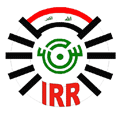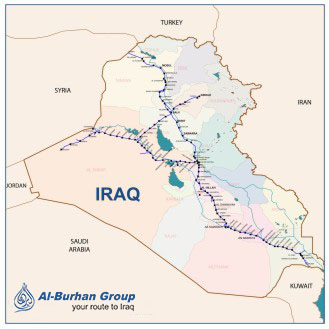Iraqi Republic Railway

Al-Burhan Group has been working along side the Iraqi Republic Railways for several years, bringing technology
and raw power into the locomotive industry. Al-Burhan Group has been the main supplier of concrete sleepers for the rail way network, delivering large quantities as and when the need arises.
Iraqi Republic Railways is the state company of Iraqi Railway is an economical establishment and symbol which contributed and contributed in the economical, civilization and social development of Iraq.

The first section of railway to be opened in Iraq (or Mesopotamia as it was at the time) was a 76 mile length of the Baghdad Railway between that city & Samarra that commenced operations in 1914. Work had started northwards from Baghdad with the aim of meeting the section being constructed across Turkey & Syria to Tel Kotchek and an extension northwards from Samarra to Baiji was opened in December 1918. In the meantime from 1916 onwards a lot of narrow gauge equipment, firstly 2’ 6” gauge & later metre gauge was brought across to Southern Mesopotamia from India by the British Military Authorities & used to construct various sections of line to assist with the war effort against the Turks, Mesopotamia then being part of the Ottoman Empire. The metre gauge line from Basra to Nasiriyah was the most important section constructed during the war in terms of its significance as part of later efforts to construct a national railway network.

Soon after the end of World War I this was extended northwards from Ur Junction outside Nasiriyah up the Euphrates valley with the complete Basra to Baghdad route being opened on 16th January 1920. The other section of metre gauge line built during World War I that had ongoing significance was that from Baghdad East north eastwards to the Persian border. After the war the eastern end of this line was diverted to Khanaqin and the wartime built line north west from Jalula Junction was extended from Kingerban to Kirkuk in 1925.
It was not then until 1936 that work restarted on the completion of the Baghdad Railway route to finally complete this between Tel Kotchek on the Syrian frontier and Baiji with the through route finally being opened on 15th July 1940. After World War II the Iraq Petroleum Company opened their branch at Kirkuk in January 1947 & the metre gauge line was extended northwards from here to Arbil, opening in June 1949.
IRR is composed of 1905 route-km of standard gauge. The railway suffered approximately U.S.$1 billion in war and looting damage from 1980 to 2003.[1] The IRR has one international interchange, with Chemins de fer Syriens (CFS) at Rabiya. The system runs from Rabiya southward through Mosul, Bayji, and Baghdad to Basra, with a branch line from Shouaiba Junction (near Basra) to the ports of Khor Az Zubair and Umm Qasr, westward from Baghdad through Ramadi and Haqlaniya to Al Qaim and Husayba, with a branch line from Al Qaim to Akashat, and east-west from Haqlaniya through Bayji to Kirkuk.

